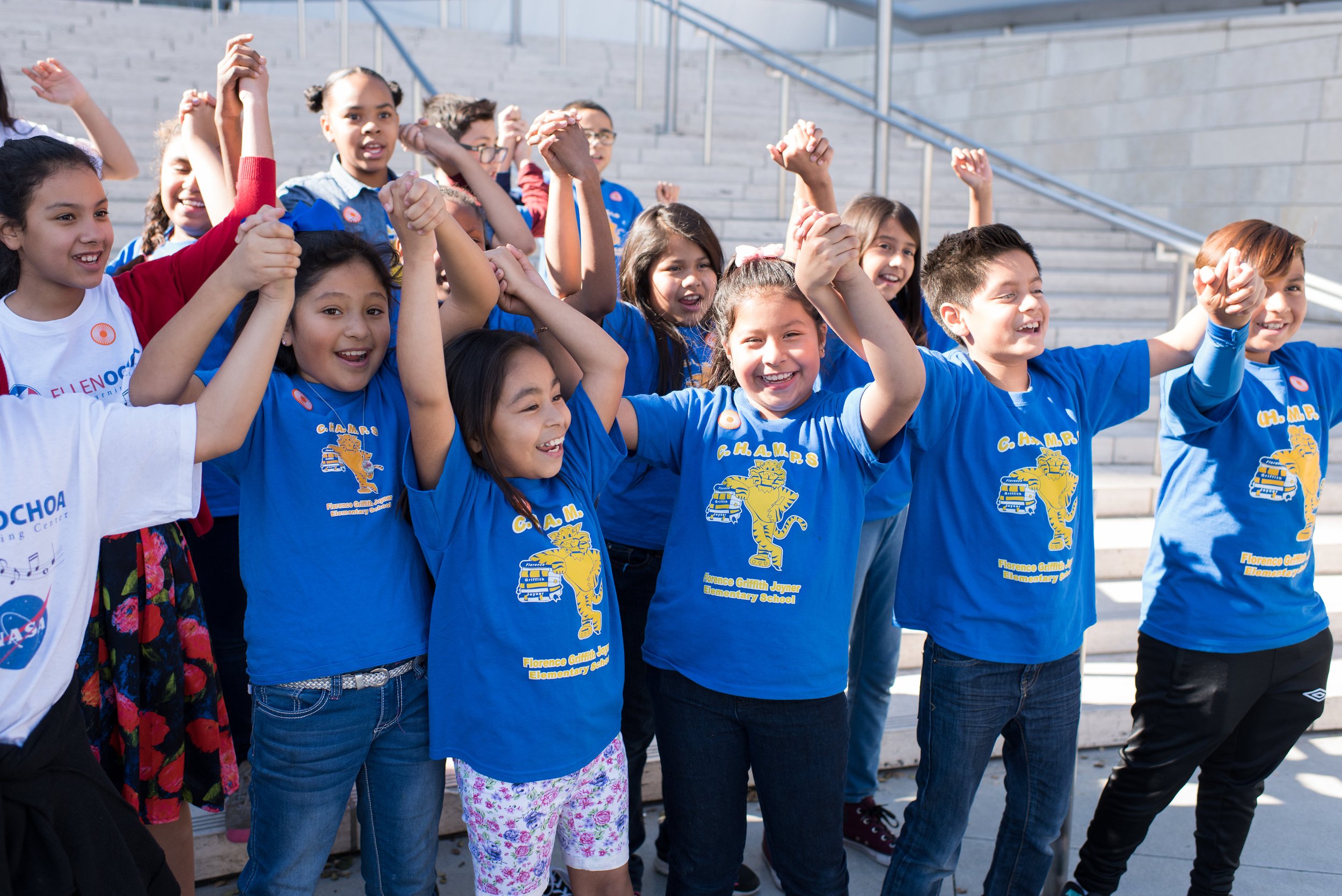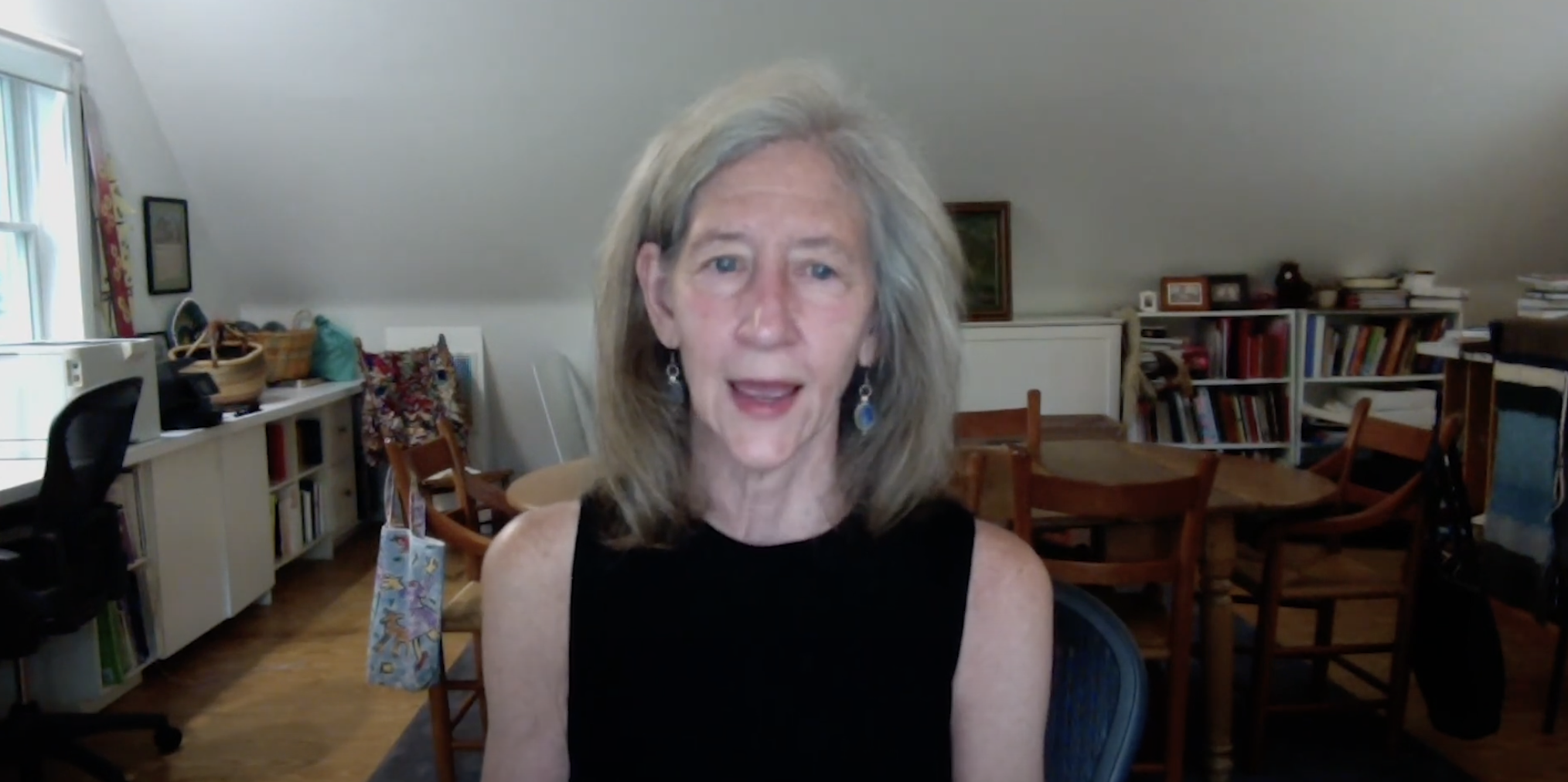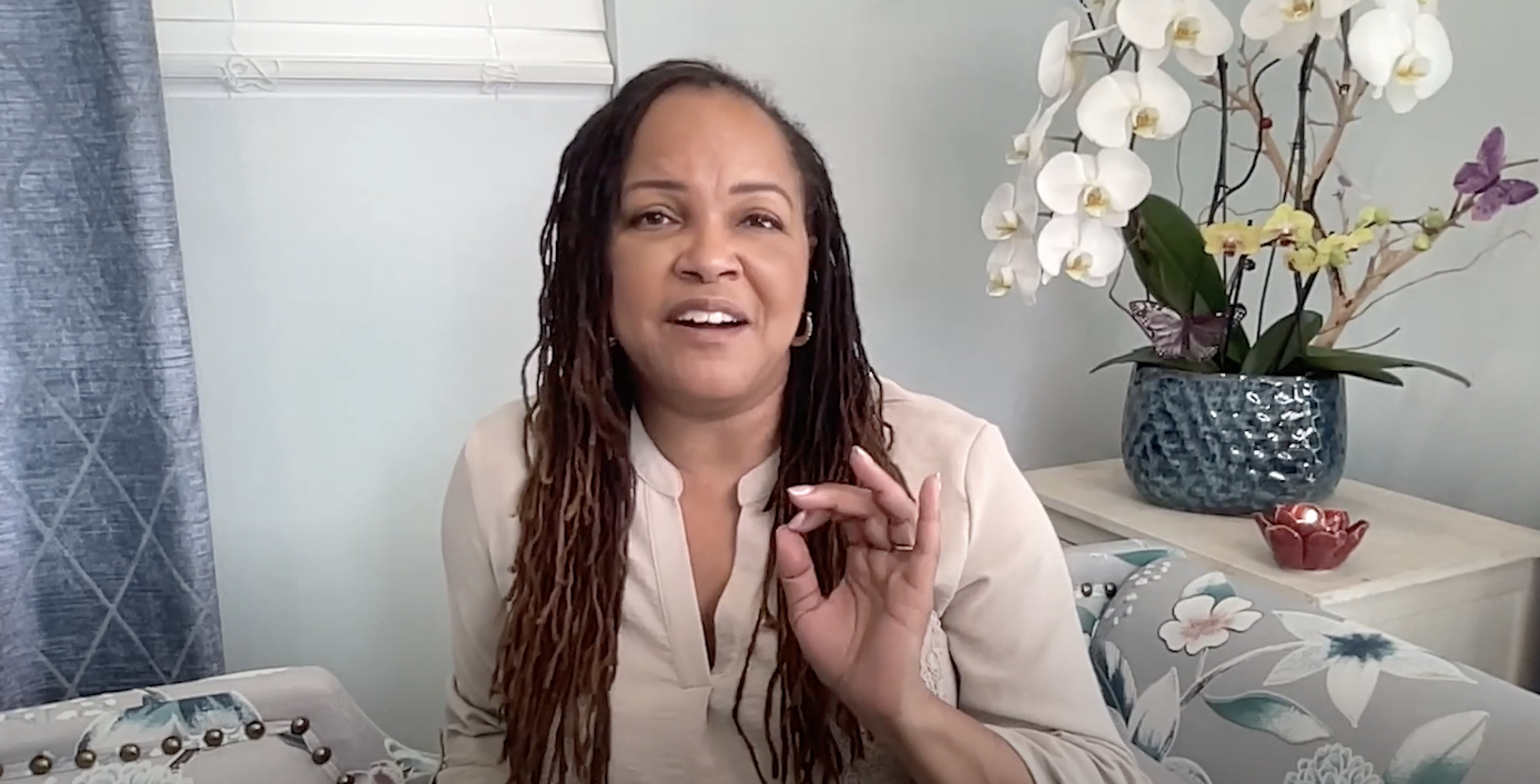
Turnaround Arts
Learning Framework
Our Framework
Turnaround Arts Learning Framework: Arts-full Practices for Belonging
By collaborating with communities where students and adults Experience the Arts, Make Art, and Connect through the Arts in joyful and culturally responsive ways, Turnaround Arts champions belonging-supportive environments that respect every student’s identity, capacity to succeed, and their individual agency. These arts-full spaces encourage all participants to learn and thrive.

The science proves that belonging helps the brain feel comfortable and allows us to focus on higher order thinking and learning.
Belonging in Brief
In these bite-sized videos, listen to experts in the field define belonging and its importance.
Why Turnaround Arts and Belonging?
-
Like the arts, belonging has long been seen as a “nice to have” rather than a “must have” in education. But current research shows that without a true feeling of belonging, students are unable to achieve the greatest learning and academic success. Without belonging, teachers burn out quickly and suffer a feeling of limited efficacy. Without belonging, students struggle to devote their full cognition to learning and manifest this stress with behaviors that attract negative attention.
-
As Turnaround Arts began its second decade we looked back on the successes of our initial implementation.
In our strategic planning process, we learned of the great gains partner schools experienced across many realms, and heard individual stories from countless individuals who shared the meaningful impact that the program has had on their lives. By listening to the Turnaround Arts community, we came to realize that the program’s successes stemmed from a palpable shift in school culture and climate. By incorporating the arts more fully into each school day, many schools saw a positive change in the way their environments felt and functioned.
-
We could see anecdotally that the act of art-making with others inherently draws students and teachers alike closer together. We also saw students develop skills in collaboration, cooperation, empathy, and trust. What we saw firsthand is supported by recent research describing how the simple act of rhythmically bouncing or tapping in unison with others can increase generosity, trust, and tolerance, demonstrating the pro-social benefits of making and enjoying music together. We couldn’t help but ask ourselves questions like:
What would it look like if an entire school was centered around this principle of building belonging through the arts?
What would happen if teachers developed relationships with their students by creating, playing, and laughing together?
What would schools be like if academic curricula asked students and teachers to delve deep into their identities, as humans and artists, and learn about one another along the way?
What if schools created places that reflected students’ identities and invited every community member to contribute to how the space felt and functioned?
These questions, the research, our observations, input, and feedback gathered from the network and our think tank participants, combined with our intentional focus on the values of anti-racism and cultural responsiveness, culminated in the design of our new Turnaround Arts Learning Framework: Arts-full Practices for Belonging.
-
RESEARCH STUDIES
Extracurricular music and visual arts activities are related to academic performance improvement in school-aged children, NPJ | Science of Learning, 2023
A Japanese study outlining the impact of extracurricular participation in arts activities in general academic performance in middle school.
Centering Student Voices to Transform Educational Systems, Arts Education Partnership, 2022
A guide detailing how arts programs that place an emphasis on honoring student voice can have significant impacts on school achievement and culture. The report highlights ways to center equity and anti-racism.
Towards Transformative Global Citizenship Through Interdisciplinary Arts Education, International Journal of Education and the Arts, 2022
Researchers found that artistic activities and arts education, including the ability to play and imagine as a means of learning, allowed students to address and explore deeply issues related to social justice. The study suggests that interdisciplinary arts education practices are particularly powerful in prompting students to perceive and engage with the world around them.
Powerful Arts Education Practice, William and Flora Hewlett Foundation, 2021
The result of a working group of arts education leaders, this publication pulls together elements of effective practices for schools to use in the development of their programs. Educators could review as a checklist of sorts to understand and develop the dimensions necessary to create a well-rounded and dynamic program of artistic practice in schools.
Art for Life’s Sake, The Case for Arts Education American Academy of Arts and Sciences, 2021
This study makes the case for the values that arts education teaches and includes policy recommendations for strengthening arts in our educational system. Deborah Rutter, the Kennedy Center’s President, co-chaired the commission on the arts that authored this report. This document is easily-read and includes anecdotes from all stakeholder groups in the education sphere.
Improv experience promotes divergent thinking, uncertainty tolerance, and affective well-being, Thinking Skills and Creativity, March 2020
This paper supports earlier research that training in improvisation can improve students’ divergent thinking, boost positive affect and increase tolerance to uncertainty.
Investigating Causal Effects of Arts Education Experiences: Experimental Evidence from Houston's Arts Access Initiative, Rice Kinder Research Institute for Urban Research, 2019
This randomized controlled trial in Houston found that arts-learning experiences improved students’ school engagement, compassion for others, writing achievement and college aspirations, while reducing disciplinary issues. The study argues that increasing arts learning experiences, the school was able to build a better climate to allow for myriad other benefits to emerge. A great summary of the study can be found here.
Arts Education and Social Emotional Learning Outcomes, University of Chicago Consortium on School Research, 2019
This study explores two questions: “What kind of theory of action describes the role arts education can play in children's social-emotional development?” and “ What mechanisms of arts education can affect social-emotional competencies?” It finds that encouraging students to engage in cycles of practice, production and reflection are key components to help students as they encounter challenges within the creative process, and suggests the “how” of arts education is equally as important as the “what.”
Learning Through Play At School, 2019 LEGO Foundation
This white-paper investigates integrated pedagogies, including those seen in arts integration including active learning, collaborative and cooperative learning, experiential learning, guided discovery learning, inquiry-based learning, problem-based learning, and project-based learning, can positively affect student learning across social, emotional, physical, creative, and cognitive domains.
The Evidence Base for How We Learn Supporting Students’ Social, Emotional, and Academic Development, Aspen Institute and Council of Distinguished Scientists, 2017
This report argues that social emotional development is key to developing well-rounded individuals, and supports using the arts both for student development of social-emotional skills, but also for the improvement of teacher effectiveness and well-being.
Review of Evidence: Arts Integration Research through the Lens of the Every Child Succeeds Act (ESSA), Wallace Foundation, 2017
This research review identifies the funding streams through ESSA that can be used to support arts integration, and includes data showing student growth as a result of learning through arts integration techniques.
Impact of Music Education, NAMM Foundation, 2014
This report covers how children benefit from music education in schools” cites dozens of research, including many studies demonstrating the academic benefits of studying music.
Preparing Students for the Next America: The Benefits of an Arts Education, Arts Education Partnership, 2013
This short, highly readable research brief includes evidence-based outcomes of how the arts prepare students for success in school, work and life. It’s a quick, easy read of why the arts are great for students.
Reinvesting in Arts Education: Winning America's Future Through Creative Schools, President’s Committee on the Arts and Education, 2011
This foundational text served as the basis for creating Turnaround Arts, and much of the program is based on recommendations made in this report. Understanding that the program stemmed from this report is helpful context as you read. This report highlights the disparities in public arts education and points to documented outcomes of arts education. It includes recommendations for policymakers at every level.
Qualities of Quality Report: Understanding Excellence in Arts Education, The Wallace Foundation, 2009
This study, authored by some of the founders of Project Zero at Harvard Graduate School of Education, examines how arts educators define high-quality arts learning and teaching, and identifies markers of excellence that administrators can look for in their classrooms. The report emphasizes that the most important thing that quality arts education can do is develop students’ ability to think creatively and make connections. This is a foundational study that includes the different purposes of arts education, elements of quality evaluated through four distinct lenses, and the teaching and assessment of arts in schools. It is deserving of a thorough read by anyone interested in arts education, but at the very least, check out the executive summary.
Learning, Arts and the Brain, The Dana Foundation, 2008
This paper is a collection of articles studying the relationship between between arts learning and brain development. Studies of all art forms are represented, with interesting findings about the connection between music education and spacial relationship development, memory and reading acquisition, among other elements.
Critical Evidence: How the Arts Benefit Student Achievement, National Assembly of State Arts Agencies and Arts Education Partnership, 2006
This fact-based, non-technical language pamphlet collected the most current and influential research on the value of the arts in education. It is specifically focused on how arts learning can yield non-arts outcomes.
Mobilizing Support for Integrated Arts Education: National Opinion Research Findings, Douglas Gould & Co, 2005
This Ford Foundation-funded study finds that public perception of the arts is that they are essential in education, and not emphasized enough in our current system. The report suggests that by understanding the public perception of arts integration, we can develop better strategies that result in sustainable arts education opportunities.
Third Space: When Learning Matters, Arts Education Partnership, 2005
The report is based on a three-year research study posing the question “How do the arts contribute to the improvement of schools that serve economically disadvantaged communities?” With references to current research in cognition, student engagement and youth development, it highlights the ways in which the arts were able to transform schools in ten communities engaging in arts practices to create great schools.
Champions of Change - The Impact of the Arts on Learning, Arts Education Partnership and The President’s Committee on the Arts and Humanities, 1999
This collection of seven significant articles from a variety of esteemed researchers supports a critical finding that the arts no longer should be characterized solely by their ability to promote learning in the arts or in other disciplines. The studies found that learning in and through the arts can help “level the playing field” for youth who live in systemically underresourced areas. Another found that students can achieve at higher levels through their engagement with the arts. The collection supports a more dynamic and less either-or model for arts education and overall learning.
Gaining the Arts Advantage: Lessons from Districts that Value Arts Education, The President’s Committee on Arts and Humanities and Arts Education Partnership, 1999
The report’s central finding (“The single most critical factor in sustaining arts education in their schools is the active involvement of influential segments of the community in shaping and implementing the policies and programs of the district.”) is influential when examining the organization of Turnaround Arts and its key players.
Start With The Art: Arts for Learning Maryland, Wolf, Brown. Holochwost - ongoing
Turnaround Arts is very much interested in the findings from this study by Brown, Wolf, Holochwost, and Prince George’s County Public Schools to test arts-integrated instruction designed to improve academic performance and socioemotional learning for poverty-affected children in kindergarten through third grade.
The Psychological and Physiological Benefits of the Arts, Frontiers Research
This is a massive research collection which pulls together myriad studies that investigate the benefit of arts activities in many different populations. A scroll through the table of contents will certainly yield a study that would align with any school’s specific situation!
OTHER RESOURCES
Arts Education is Essential, A statement by a host of national organizations endorsing and advocating for arts education for all students.
Why School Climate Should Be Every Principal’s Top Priority, Aspen Institute, 2018
This blog post, also published in Education Week, highlights the essential nature of school climate considerations for school leaders.
Using Arts Education to Help Other Lessons Stick, The New York Times, 2019
The New York Times publishes a basic article on arts integration strategies and using artistic practices to teach in other content areas - one of the key components of our work.
Why an arts-rich curriculum boosts student mental health, Tes Magazine
An interview with the heads of a UK school that received the 2021 creative school award AND mental health and wellbeing award. This is a great case study with references to school climate and belonging that are enhanced with the arts.
Arts Education Matters: We Know, We Measured It, Ed Week, 2014
A plainspeak article explaining the results of two research studies that demonstrate the effects of exposure to the arts, including their desire to become cultural consumers, their propensity for tolerance, empathy and critical thinking, and their appreciation of differences in the world. Find the studies referenced here and here.
Towards An Enriched Understanding Of Arts Integration, Creative Generation, 2022
Jeff Poulin’s article details research around arts and social justice education, including a summary of a literature review, a crosswalk of the National Core Arts Standards and the Southern Poverty Law Center’s Teaching Tolerance Program (now Teaching for Justice)’s Social Justice Standards, and analysis of teacher experiences utilizing integrated lesson plans employing social justice and arts integration.
Principles of Artful Teaching - Art of Teaching Arts, Although this is a video series aimed at high school teachers, these short classroom segments illustrating how teachers employ the seven principles of artful teaching are helpful for any teacher looking to meet their students’ needs and imaginations.
TED TALKS
Sir Kenneth Robinson
At one time the most-watched TED talk of all time, Sir Kenneth Robinson argues that schools “kill creativity,” noting “We don’t grow into creativity, we grow out of it. Or rather, we get educated out of it.” Robinson argues that creativity is as important as literacy and should be afforded the same “status” in our educational systems.
Teaching art or teaching to think like an artist?
Cindy Foley, Columbus Museum of Art Executive Assistant Director and Director of Learning and Experience
In this Tedx talk, Cindy Foley argues that art’s value is in its ability to develop learners who think the way artists do, and society needs to shift the perception that implies creativity is an artistic skill alone. She outlines three critical habits of artists and outlines how educators can teach for these lifelong skills.
Download the Learning Framework
Experience the Arts, Make Art, and Connect through the Arts. Create arts-full spaces that help all participants learn and thrive.
Acknowledgments
We acknowledge the invaluable contributions and collaborations to the Learning Framework from:
Framework Creators
Dr. Edie Demas
Laura Epperson
Stephanie Lash Kilpatrick
Other Turnaround Arts Team Members (current and former)
Holly Bass
Jonae Davis
Emilia Pazniokas
Erin Whalen
Thought-partners
Courtney J. Boddie
Sara Boyce
Dr. Niki Elliott
Jenna Fournel
Lorraine Martinez Hanley
Mel Harper
Tia Hentele
Ping Ho
Ron Gubitz
Dr. Jennifer Katona
Alysia Lee
James Miles
Dr. Linda F. Nathan
Jacqueline Suskin
Michael Wiggins
Dr. Dennie Palmer Wolf






